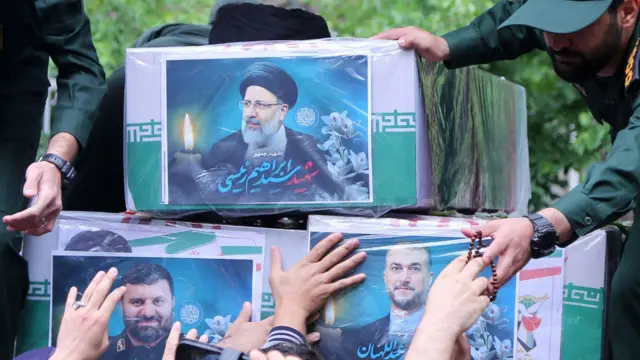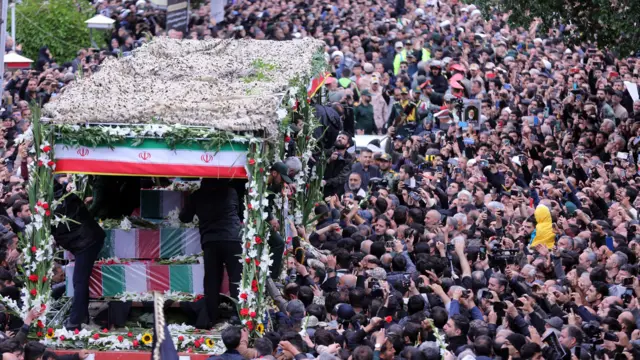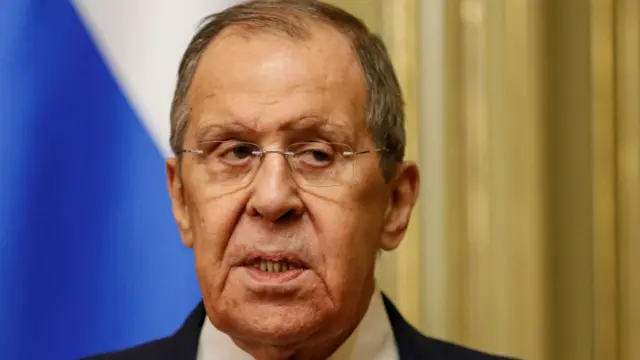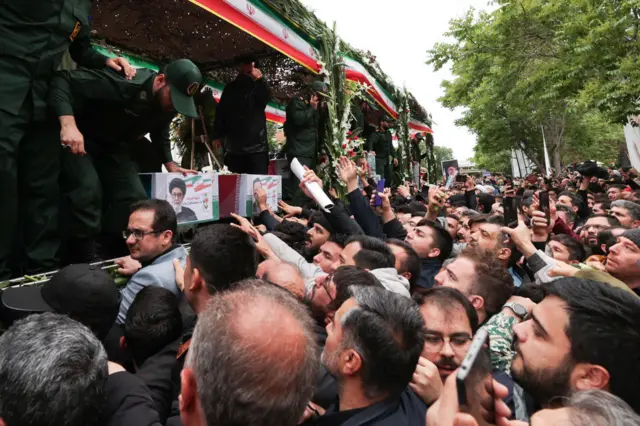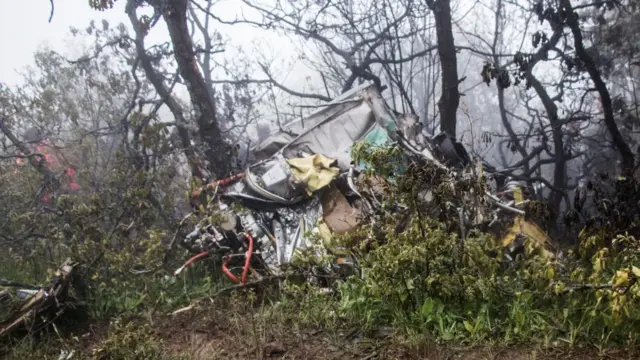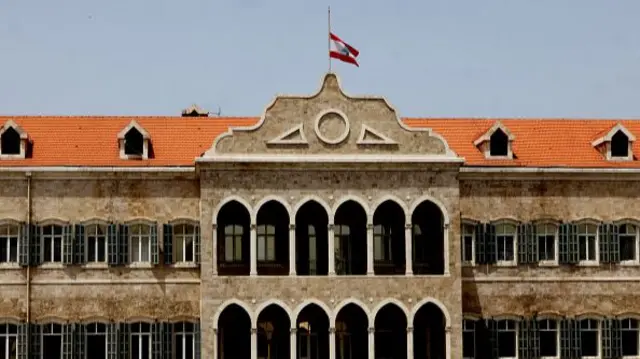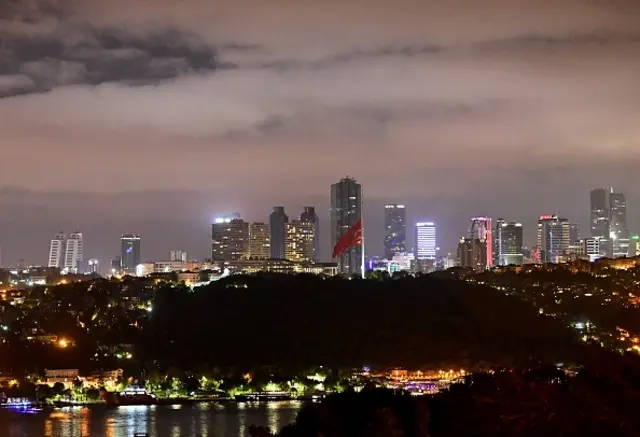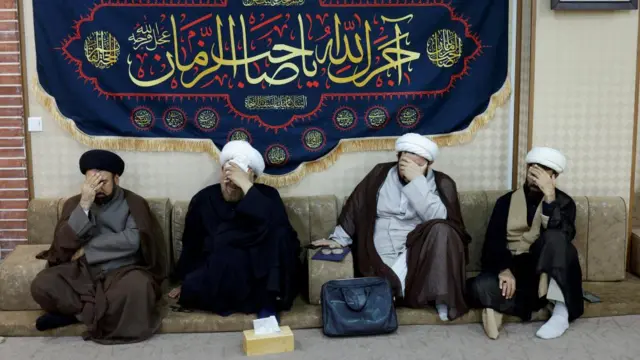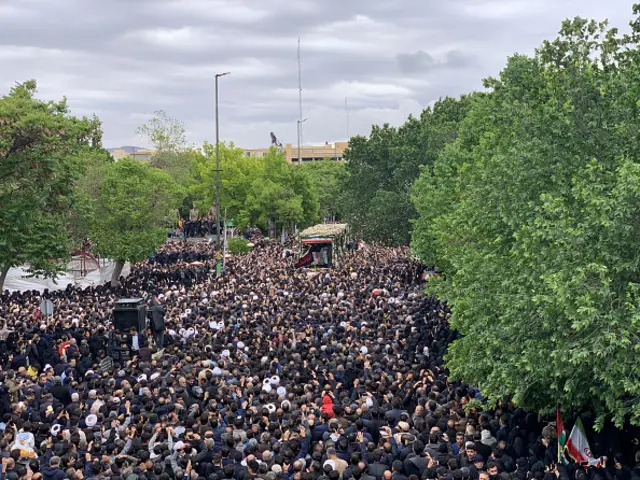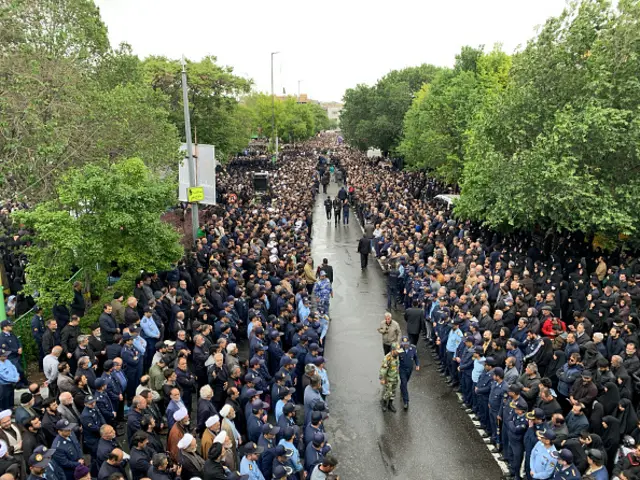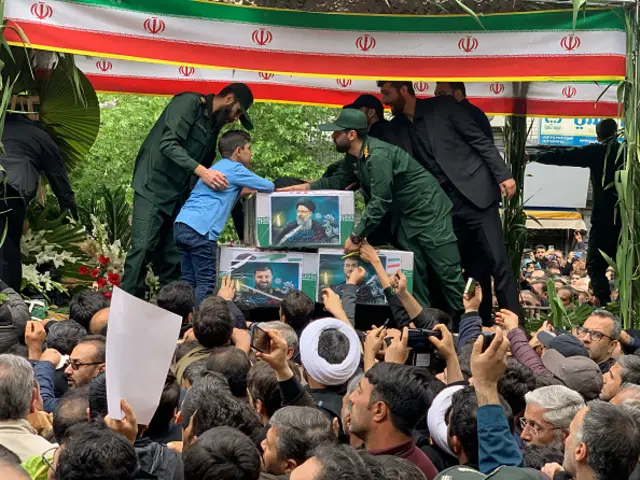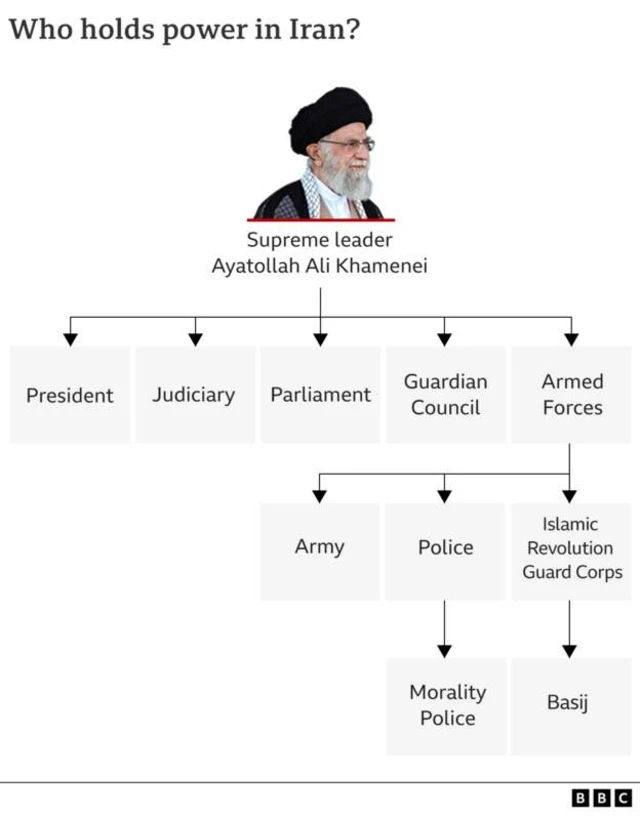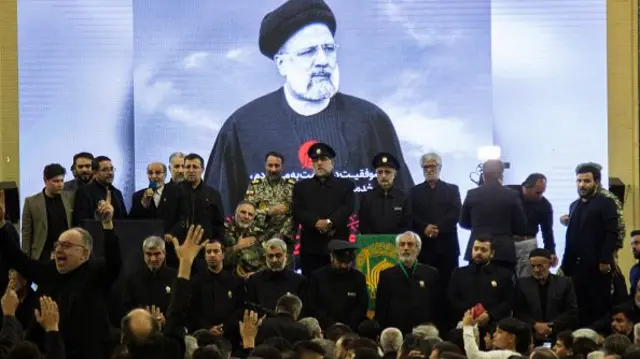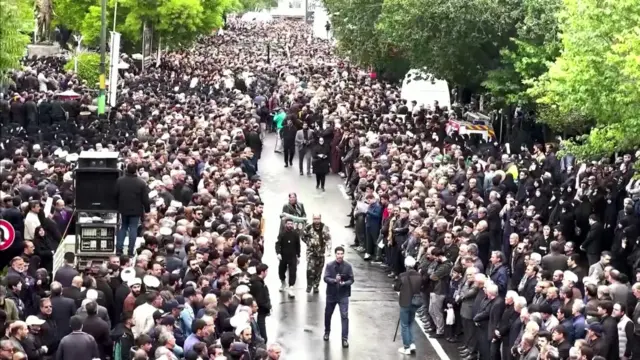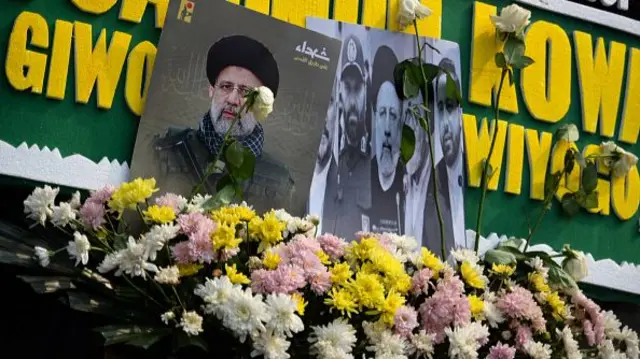We're about to pause today's live pagepublished at 13:39 BST 21 May 2024
 Jack Burgess
Jack Burgess
Live editor
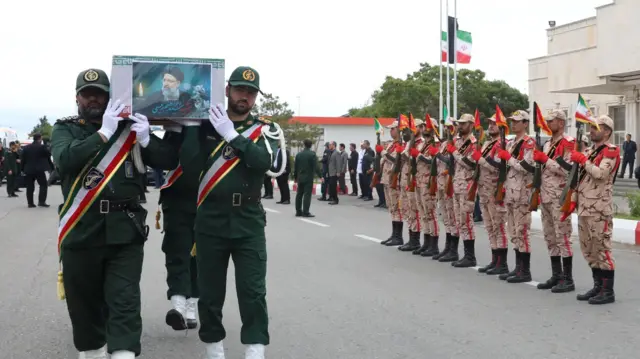 Image source, WANA/Reuters
Image source, WANA/ReutersSoldiers carry the coffin of the late Iranian President Ebrahim Raisi during his funeral procession
We're wrapping up today's live page covering President Raisi's funeral procession in Iran.
Thanks for joining us as we followed the events in Tabriz.
Here's a brief recap of what's been happening and what we can expect for the rest of the week:
- Thousands of supporters of Raisi poured on to the streets to witness a funeral procession in the city of Tabriz, near where the late president and seven others died in a helicopter crash.
- The huge crowds only tell one side of the story as not all Iranians supported the president with many celebrating his death on social media
- Raisi's body as well as others who died in the crash will go to the religious city of Qom before continuing to two holy sites
- As part of the five days of mourning declared yesterday, tomorrow will be a public holiday and a large funeral will take place in Tehran, Iran's capital, where Supreme Leader Ayatollah Khamenai is expected to lead a prayer
- On Thursday, Raisi will be buried in his hometown of Mashhad, with Friday set to be the final day of official mourning
- An investigation into the cause of the crash is under way
- Elections for a new president are set to take place on 28 June
You can carry on reading here with our explainer: What we know about deadly Iran helicopter crash
And also our latest stories:
Raisi's death leaves Iranians with mixed feelings
What next for Iran after President Raisi's death?
This page was produced by our team in London with writers Ece Goksedef, Lana Lam and Seher Asaf and input from BBC Persian.
It was edited by Johanna Chisholm and Jack Burgess.



